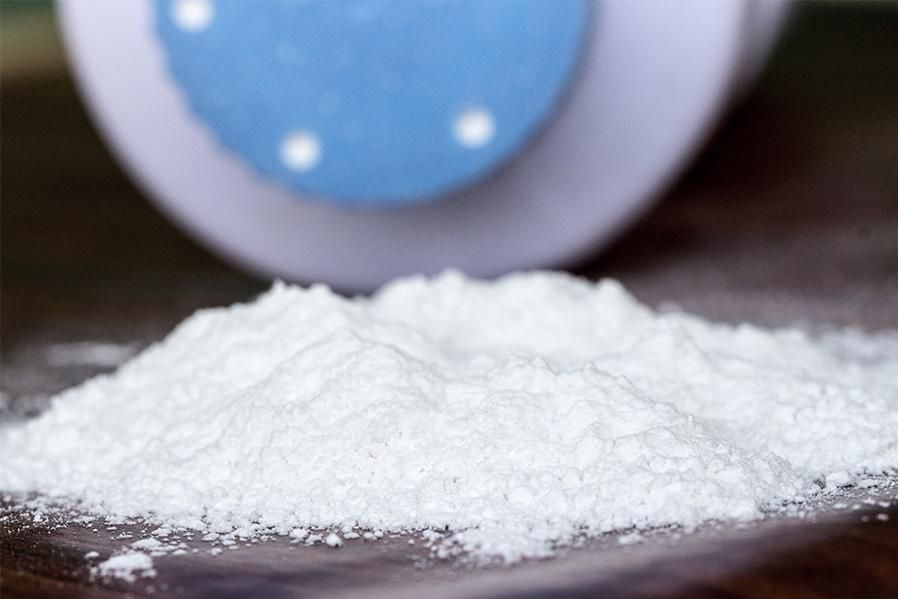
Case Overview
Talcum powder side effects include respiratory problems, lung damage and cancer. In some cases, people may experience talcum powder side effects after exposure to asbestos-contaminated talcum powder. However, talcum powder may be linked to cancer regardless of whether the product has asbestos contamination. If you’ve developed cancer or another health issue (or a loved one has done the same) that could stem from talc exposure, you may have legal grounds to file a talcum powder lawsuit.
Key takeaways about talcum powder side effects
- Studies link some severe health conditions, including respiratory issues and cancer, to exposure to products made with talcum powder.
- Talc is a naturally occurring mineral that often contains deposits of asbestos. Research suggests that talc can cause cancer, even if not contaminated with asbestos.
- Perceived talcum powder side effects have led to thousands of lawsuits against Johnson & Johnson and other companies that make talcum powder. Motley Rice represents many plaintiffs who believe they’ve been harmed by talcum powder or another women’s health care product.
What is talcum powder?
Talcum powder is a fine white powder made from talc, a naturally occurring mineral. Talc is a magnesium trisilicate mined from the earth. In its natural form, talc can contain asbestos — a known carcinogen. But research shows that even if it doesn’t contain asbestos, talc is still carcinogenic.
Talc absorbs moisture and reduces friction when made into a powder. For these reasons, it’s a popular choice for use in some cosmetic products, including baby powder and adult body and facial powders.
Brands containing talc include JOHNSON’S® Baby Powder and Shower to Shower, both made by Johnson & Johnson. Studies link talcum powder exposure to severe health conditions, including cancer. Types of exposure include inhalation, ingestion, and use on the genitals.
How are people exposed to talcum powder?
People can come in contact with talc through various products, including body powders, makeup and food items. It’s also possible for some people to become exposed to talc while on the job. For example, employees who mine talc or work in facilities that make talcum powder or talc products can be at greater risk.
Products that may contain talc include:
- Adult body powders
- Baby powders
- Blush
- Chewing gum
- Eyeshadow
- Liquid makeup
- Pill tablets
- Pressed powder
- Rice
You can avoid the side effects of talc and talcum powder by using products that contain cornstarch instead of talc. Cornstarch powders have many of the same uses and are as effective as talcum powder. But unlike talcum powder, cornstarch is an organic carbohydrate. The body can break down cornstarch without the negative health effects associated with talcum powder.
Health effects of talcum powder exposure
Talcum powder exposure can cause severe long-term health problems, including forms of cancer. In some instances, the health effects of talcum powder exposure may be related to asbestos contamination. But some studies have also shown a link between asbestos-free talc and cancer.
Talcum powder and ovarian cancer
Some studies attribute the development of epithelial ovarian cancer to talcum powder use in the genital area. Epithelial ovarian cancer is the most predominant form of ovarian cancer. It develops in the tissue surrounding the ovaries.
In 2010, the International Agency for Research on Cancer (IARC) concluded that the use of talc in the perineal area may increase a woman’s risk of ovarian cancer by 30% to 60%. The IARC is the cancer agency of the World Health Organization (WHO).
According to the American Cancer Society, ovarian cancer is one of the leading causes of cancer deaths among women. Side effects of this potentially fatal disease include:
- Abdominal bloating or swelling
- Back pain
- Changes in bowel habits, such as constipation
- Discomfort in the pelvic area
- Fatigue
- Frequent need to urinate
- Quickly feeling full when eating
- Weight loss
Treatment for ovarian cancer includes chemotherapy, hormone therapy, immunotherapy and targeted prescription drugs. Ovarian cancer treatment often uses more than one therapy and may also require that one or both ovaries and the uterus be removed.
Talcum powder and other health dangers
Talcum powder has also been linked to cases of primary peritoneal cancer and cancer of the fallopian tubes. Some studies have found evidence that exposure to asbestos-contaminated talcum powder may lead to other serious health concerns, including:
- Lung cancer
- Lung damage
- Peritoneal mesothelioma (a rare cancer affecting the lining of the abdomen and abdominal organs)
- Pleural mesothelioma
All these health issues can result in life-altering symptoms and possible death.
What is talcum powder poisoning?
Talcum powder poisoning is a term used to describe symptoms that can result from inhaling or swallowing talcum powder. It’s not a formal condition you can file a lawsuit for.
Babies and adults can get talcum powder poisoning by breathing in or swallowing the powder. Poisoning can also come about from using talc products over time.
Talcum powder poisoning isn’t related to any ongoing litigation, such as talcum powder lawsuits over ovarian cancer.
What are the symptoms of talcum powder poisoning?
Talcum powder poisoning symptoms vary depending on the health condition of the individual affected and how they were exposed to talc. Talcum powder poisoning can cause the following health issues:
- Bladder and kidneys: Significantly decreased urine output, or no urine output
- Eyes, ears, nose and throat: Cough, eye irritation and throat irritation
- Heart and blood: Fainting, seizures and low blood pressure
- Lungs: Chest pain, cough, breathing difficulty, lung failure and wheezing
- Nervous system: Twitching (of the arms, hands, legs, feet or facial muscles), coma, drowsiness, fever and a lack of desire for physical activity (lethargy)
- Skin: Blisters, blue skin, lips and fingernails
- Stomach and intestines: Diarrhea and vomiting
Legal options after talcum powder exposure
Companies that make and market consumer products are responsible for ensuring their products are safe. Too often, though, companies put profits above people and expose consumers to harm.
If you or your loved one experienced talc exposure that may be the cause of ovarian cancer, lung cancer, mesothelioma or another health condition, Motley Rice can help you pursue justice with a talcum powder lawsuit.
We’re involved in ongoing litigation against Johnson & Johnson. Plaintiffs in these cases (or their deceased loved ones) were diagnosed with some form of female reproductive system cancer linked to talc exposure. Cancers associated with exposure to talc include ovarian cancer, cancer of the fallopian tubes and primary peritoneal cancer.
Johnson & Johnson has already faced thousands of claims, including many that are in multidistrict litigation (MDL). In May 2024, the manufacturer announced it had set aside $11 billion to cover its talcum powder lawsuit settlements.
Contact a talcum powder lawyer
If you have used talcum powder and later been diagnosed with cancer, or someone you know has used talcum powder and had this same diagnosis, you may have a talcum powder claim.
Please contact defective products attorney Carmen Scott by email or call 1.800.768.4026 to learn more about talcum powder lawsuits.
Did manufacturers conceal the dangers of talcum powder exposure?
Evidence indicates that Johnson & Johnson and other companies named in talcum powder litigation failed to warn consumers about the health risks associated with talc, plaintiffs allege. Johnson & Johnson knew of studies that as early as 1982 established a connection between cancer and talcum powder use on the genitals. Researchers at that time advised a doctor working for the company to place a label on talcum powder products, warning of ovarian cancer risks.
Johnson & Johnson didn’t follow this advice but continued to manufacture and market talcum powder products as “safe.” The company also failed to include warnings on its baby powder, adult body powders and other talc products. Johnson & Johnson didn’t stop using talc-based baby powders until 2023, when it switched to a cornstarch-based powder portfolio for the JOHNSON’S Baby Powder brand.
What do I do if I suspect my ovarian cancer was caused by talcum powder exposure?
If you use talc-based products and have symptoms of ovarian cancer or another serious medical condition linked to talcum powder, see your doctor immediately. Successful treatment is more likely if problems are detected early. Your physician can perform diagnostic testing and develop a healthcare plan.
You may also consider contacting an attorney who can tell you about your options for seeking compensation for talcum powder illnesses and injuries. You may have a strong case to pursue damages for medical expenses, lost wages, pain and suffering, or the wrongful death of a loved one.
Our toxic exposure experience
Motley Rice is on the front lines of litigation for clients hurt by dangerous products and harmful substances. We advocate for the rights of workers, consumers and their families. Our firm has taken leadership roles in some of the most significant cases to go through U.S. courts.
Our attorneys have represented thousands of women who’ve suffered an injury or developed an illness in connection with women’s health products, including:
Contact us today to learn more about our toxic exposure experience.
Key takeaways
What is talcum powder?
Health effects of talcum powder exposure
What is talcum powder poisoning?
Legal options after talcum powder exposure
What do I do if I suspect my ovarian cancer was caused by talcum powder exposure?
Our toxic exposure experience
- Sources
- American Cancer Society. Key Statistics for Ovarian Cancer.
- American Cancer Society. Talcum Powder and Cancer.
- Gordon RE, Fitzgerald S, Millette J. Asbestos in commercial cosmetic talcum powder as a cause of mesothelioma in women. Int J Occup Environ Health. 2014 Oct;20(4):318–332.
- International Agency for Research on Cancer (IARC). IARC Monographs evaluate the carcinogenicity of talc and acrylonitrile IARC Monographs Volume 136.
- Johnson & Johnson. Johnson & Johnson Consumer Health to Transition Global Baby Powder Portfolio to Cornstarch.
- Massachusetts Department of Public Health. Talc in Cosmetics & Consumer Products.
- Mayo Clinic. Ovarian cancer.
- Poison Control. Get Help Online or By Phone.
- Reuters. Johnson & Johnson reaches $700 million talc settlement with US states.
- St. Luke’s Hospital. Talcum powder poisoning.


